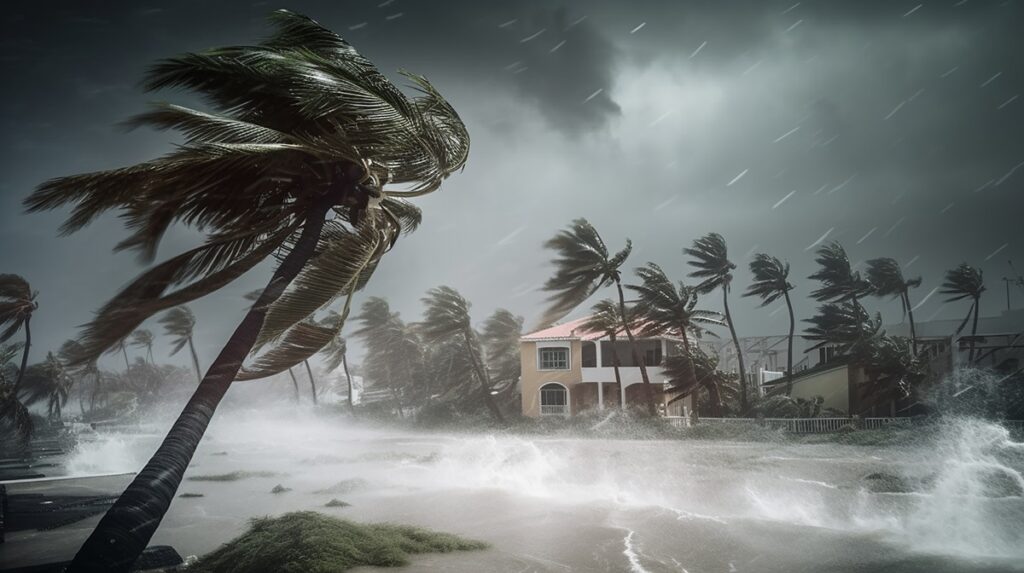CoreLogic has issued its 2024 Hurricane Risk Report, offering an analysis of hurricane risk in the U.S., shedding insight for property owners, insurers, and policymakers.
This upcoming hurricane season, the National Oceanic and Atmospheric Administration (NOAA) anticipates a return to La Niña conditions in the Pacific Ocean, with North Atlantic Ocean sea surface temperatures already warmer than any previous year on record. These conditions point towards another potentially significant hurricane season, according to CoreLogic.
A recent report from NOAA stated that hurricanes require heat from the oceans to develop and grow, and there was an abundant amount of heat in the Atlantic Ocean in 2023, as global surface temperatures exceeded the 20th-Century average by 2.12°F (1.18°C).
The makings of turbulent times
As this year’s season gets underway, last year’s hurricane season saw 20 total named storms—the fourth-highest amount in recorded history—and 10 hurricanes, three of which became major hurricanes (Category 3 or greater). This total compared to an average of 14 named storms per season from 1990-2021.
In the forecast for 2024, NOAA predicts 17-25 named storms, eight to 13 hurricanes, and four to seven major hurricanes. It also indicates an 85% chance of 2024 being an above-normal season.
CoreLogic has identified more than 32.7 million residential properties from Texas to Maine with a combined reconstruction cost value (RCV) of $10.8 trillion at moderate or greater risk of sustaining damage from hurricane-force winds.
In terms of storm surges, CoreLogic estimates that approximately 7.7 million properties, with a combined RCV of $2.3 trillion, have direct or indirect coastal exposure–making them susceptible to storm surge flooding. Climate change continues to cause sea levels to rise, thus communities to more regular and severe storm surge flooding.
Areas of concern
Miami, New York, and Houston are densely populated metros with extensive urban infrastructure. The report found that the concentration of people, buildings, and critical infrastructure increases the potential for widespread damage, and disruption in the event of a hurricane. Storm surges pose a significant threat to coastal cities like Miami and New York, where densely populated areas are situated near the coastline. Additionally, Houston’s sprawling urban landscape, coupled with its susceptibility to flooding, heightens the risk of hurricane-related impacts on the city’s infrastructure and residents.
CoreLogic’s examination of the Miami, New York, and Houston found the following key damage indicators:
Number of Homes at Moderate or Greater Risk to Hurricane Winds
- New York: 3,765,489
- Houston: 2,092,308
- Miami: 2,048,827
Number of Homes at Moderate or Greater Risk to Storm Surge
- New York: 878,226
- Houston: 192,937
- Miami: 509,133
Reconstruction Cost Value from Hurricane Winds (in billions)
- New York: $1,961.1
- Houston: $671.3
- Miami: $511.4
Reconstruction Cost Value from Storm Surge (in billions)
- New York: $415.4
- Houston: $52.6
- Miami: $124.0
Nearly half of the 120-year long hurricane record consists of years with less than $10 billion of hurricane damage. Stated another way, the probability of a year with $10 billion or less in hurricane-generated damages is about 50% (half the year’s losses are greater than $10 billion and the other half less than $10 billion). If they occurred today, particularly damaging years like 2005 (Hurricanes Katrina, Wilma, Rita, Dennis, and Ophelia) or 2017 (Hurricanes Harvey, Irma, and Maria) could cause wind and storm surge losses of approximately $160 billion and $47 billion, respectively.
Click here for more information or to access CoreLogic’s 2024 Hurricane Risk Report.




